8 Cisco Game-Changing Technology Initiatives In 2016
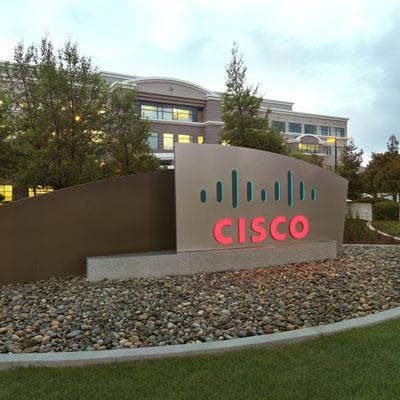
The New Era Of Cisco
Cisco Systems is striving to break new ground in 2016 through a slew of initiatives around cloud, services, application developers and even its bread-and-butter switching lines.
Many of the initiatives are geared around its new Digital Network Architecture based on automation, virtualization, analytics, managed services and open APIs delivered within the Cisco One software suite. The San Jose, Calif.-based networking giant is pushing channel partners to enter new markets, like hyper-convergence, and create larger portfolios around collaboration and application development.
The technology initiatives will drive partner profitability, Cisco said, by helping customers transition into the digital age by jump-starting refreshes and offering more holistic architectures while providing a plethora of professional services.

Cisco's New DNA For The Digital Age
Many of Cisco's new initiatives can be tied to DNA, an open, software-driven, service-centric solution. The architecture includes a new automation platform and applications, an array of cloud-based management services and Network Functions Virtualization targeting the enterprise.
Partners say DNA is changing Cisco's decades-long approach toward how it sells networking solutions. New initiatives around DNA include Cisco One offer stacks, refresh cycle structures, plug-and-play capabilities and additional rebates for partners.
"It's an opportunity for our partners to go deeper with their customers, to have more upfront professional services -- there's recurring revenue opportunities and an opportunity for our partners to accelerate, because they're going to be in lockstep with their Cisco sales team," said Nirav Sheth, senior director for Cisco's Americas Partner Organization in a recent interview.
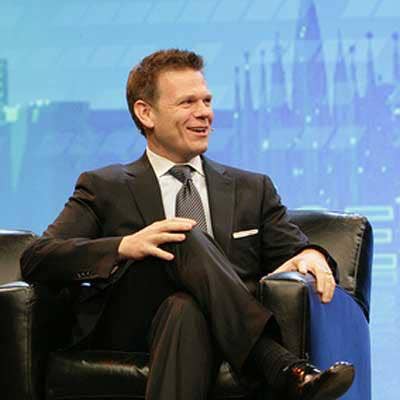
Collaboration Is King
Cisco is tying its collaboration portfolio into DNA, according to Rowan Trollope (pictured), senior vice president and general manager of Cisco's Internet of Things and Collaboration Technology Group.
"We have committed to be the first developer to build and integrate the DNA architecture into the Cisco Spark framework," said Trollope, during the company's most recent partner summit. "That's very, very important, because it's going to deliver some key integrations and capabilities we need to make it secure, reliable and enterprise-class."
Cisco's flagship collaboration solution is Cisco Spark, built on the Cisco Collaboration Cloud, designed to allow customers to message, meet or call anyone from anywhere.
Phil Mogavero, vice president of Advanced Technology Group network solutions and regional chief technology officer at El Segundo, Calif.-based PCM -- a $1.5 billion technology integrator that partners with Cisco -- said Spark tied in with DNA is going to help partners sell in the SMB market.
"They have an incredible opportunity to go after the SMB business with this," said Mogavero. "It's literally, plug it in and it gives you collaboration, it gives you video, voice -- so simplistic, much easier than their competitors in this space. … It's great for the SMB market."

New Next Generation Cloud Native Platform
The network leader is set to launch its new next-generation Cloud Native Platform in April. Cisco is pushing its developer community to take advantage of cloud-native applications through the platform, which will be delivered in a Software-as-a-Service model -- opening up a $20 billion Total Accessible Market for partners, according to Yvette Kanouff (pictured), senior vice president and general manager for Cisco's Cloud Solutions.
"This next-generation cloud platform has the ability, with ACI, to segment into both a container stack and a bare-metal stack," said Kanouff, on stage during Cisco Partner Summit. "On top of that, we have this management and orchestration layer. So CliQr gives us the ability to go across multiple clouds, to take your policy that you just created and go across multiple ecosystems. … We have these massive tools for analytics and development on top of that."
Referring to the platform, Mogavero said, "Now you can start to build out a hybrid architecture and take some of your monolithic applications and leave them in your legacy environments, and start to build out cloud-based applications, or use cloud-based applications, and put the workload where it makes sense most cost-effectively to get it there."

Containers Are The Future
Cisco's new chief technology officer, Zorawar Biri Singh (pictured), told CRN that the company's future in the data center will start to revolve around containers. Singh said large-scale virtual machines on public clouds are going to come off onto on-premise container data center stacks, which is exactly what Cisco is building.
"We're going to build a container-friendly stack, leveraging UCS, storage and networking. We're going to add open-source community software on it," Singh said. "The traditionals -- the HPs, the Dells -- are stuck dealing with server decline on the traditional model. So there's a fantastic opportunity for us and our partners."

Application Development Push
It's "very important" for partners to start adding development skills, said Rick Snyder (pictured), vice president of Cisco's Americas Partner Organization.
"All the secret sauce in the cloud is going to be orchestration management and the ability to build applications that help run a digital business. … [It's] going to be really important for us in the future," said Snyder.
The Cisco IOS XE network operating system inside DNA provides open model-driven APIs for third-party application development, application hosting, software-defined management and virtualization.
Snyder said everything that Cisco is building will be open, so it "just makes all the sense in the world" for partners to enhance their development practices and capabilities to create custom applications.
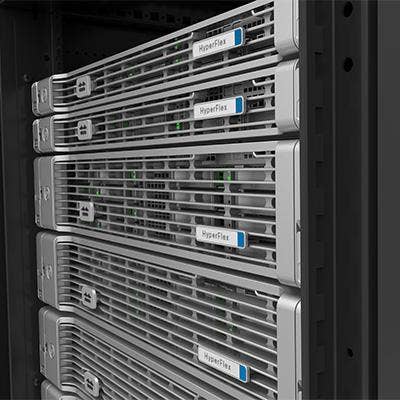
Entrance Into Hyper-Converged Market
Cisco staked its claims in the hyper-convergence market this month with the launch of HyperFlex Systems, touting it as the "next generation" of hyper-converged solutions.
"This is a technology that's going to leapfrog a lot of the incumbent players," said Todd Brannon, director of product marketing for Cisco's UCS, in a recent interview with CRN.
HyperFlex consists of Cisco UCS servers and software-defined storage technology that Cisco developed through a strategic partnership with hyper-converged startup Springpath. While some may say Cisco is coming late to the market where startups Nutanix and SimpliVity are grabbing most of the attention, Ken Trombetta, vice president, Global Partner Organization, said the networking giant expects HyperFlex to be an instant hit.
"We've had a number of partners that have sold Nutanix and have previewed our solution and they're really excited about the opportunity here," said Trombetta, in a recent interview with CRN. "This HyperFlex solution, with the price performance that it has and extending the capability and opportunity in the data center, we believe it will just expand partners' capabilities in a really services-rich environment."
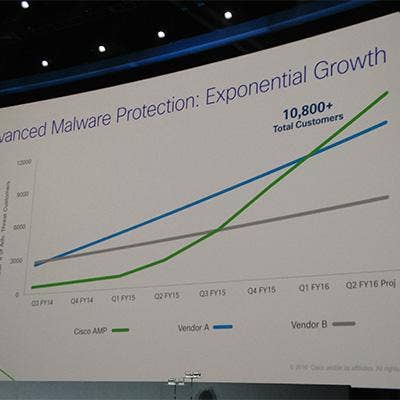
Security Initiative Front And Center
Cisco CTO Singh said that although it might be years away, customers will eventually think of Cisco "as a cybersecurity company."
Cisco imbedded security throughout DNA and recently launched new technologies in the space such as its Firepower Next-Generation Firewall, which includes its Advanced Malware Protection. At partner summit, David Goeckeler, senior vice president and general manager of Cisco's Security Business Group, said Cisco is now officially the No. 1 security vendor in the industry and its most profitable channel partners are selling security.
"The best innovation and the fastest portfolios are happening right here at Cisco," said Goeckeler.
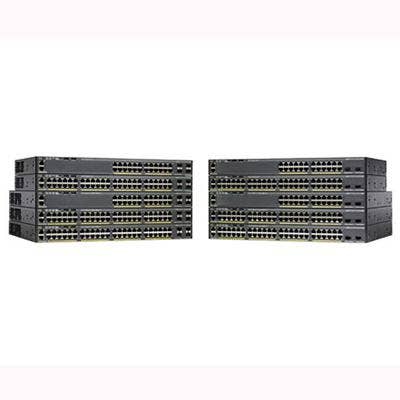
New Sw itching Line, White-Box Networking
Cisco is striving to continue its longtime market dominance in the networking world through the launch of a new line of Nexus switches powered by its Application-Specific Integrated Circuit (ASIC) innovation, giving customers the ability to transition from 10/40 Gbps to 25/100 Gbps at the same price.
The networking giant also revealed new Nexus 3000 switches that deliver 25/50/100 Gbps on a merchant-silicon-based platform. Thomas Scheibe, senior director of product management of Cisco's ACI, said it's the "largest" white-box, bright-box networking player in the market because of its Nexus 3000 lines of switches.
The switching initiative around price point and offering more solutions in merchant silicon is aimed toward giving customers more options, according to CTO Singh.
"It's about providing more choice, and us really filling out all the price points," said Singh. "There [are] also philosophical points here -- merchant silicon versus highly specially designed, well-engineered ASIC … So our view [is], let's give them the best of choice."

Acquisitions Push Continuing
Cisco has been moving at lightning speed this year acquiring companies that fit the mold of its new initiatives around cloud, collaboration, application development and network hardware differentiation. The network leader has spent well over $2 billion on acquisitions within the first two months of 2016.
On the collaboration front, Cisco bought cloud search company Synata to boost Cisco Spark, while the vendor also snatched up networking chip designer Leaba Semiconductor for $320 million.
Cisco also unveiled plans to buy cloud management startup CliQr for $260 million that provides an application-defined cloud orchestration platform to model, deploy and manage applications across bare metal, virtualized and container environments. Last, Cisco aims to spend $1.4 billion to purchase Internet of Things provider Jasper Technologies, which delivers a cloud-based IoT service platform to help enterprises and service providers launch, manage and monetize IoT services on a global scale.